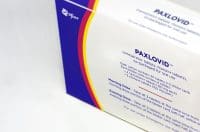Federal court finds no link between autism and vaccines
A special federal court has ruled that evidence presented by parents of autistic children failed to prove a link between autism and childhood vaccines—a decision that denies compensation to thousands of families with autistic children. The court began hearing three test cases in 2007 involving children with autism, which their parents claim was triggered by a measles, mumps, and rubella vaccine that contained thimerosal. The families had sought compensation from the Vaccine Injury Compensation Program. After the decision, the Department of Health and Human Services said it continues to support research “to better understand the cause of autistic disorders and develop more effective methods of treatment.” The court ruling could ease the tide of vaccine avoidance that has resulted in outbreaks of preventable diseases.
Read more about autism and vaccines.
###Break###
FDA advisory panel gives prasugrel thumbs-up
An advisory committee of the Food and Drug Administration (FDA) voted unanimously to recommend approval of prasugrel, an antiplatelet drug, for thrombosis prevention in patients with high-risk acute coronary syndromes who undergo percutaneous coronary intervention. The panel concluded the drug is an advance over existing therapies, such as clopidogrel (Plavix). In a study, prasugrel caused significantly fewer ischemic events than clopidogrel, although it was linked to an increase in major bleeding. The panel recommended the drug be contraindicated in patients who’ve had previous strokes or transient ischemic attacks.
Read more about the FDA’s prasugrel approval.
###Break###
Tamiflu no longer effective against the most common flu strain
Tamiflu (oseltamivir), the most widely used drug for influenza treatment, no longer works for the dominant flu strain in the United States, according to the Centers for Disease Control and Prevention (CDC). Early data from a limited number of states showed that a high proportion of influenza A (H1N1) viruses are Tamiflu resistant. The CDC has advised healthcare practitioners to use an alternative antiviral, zanamivir (Relenza), or a combination of oseltamivir and rimantadine. However, oseltamivir alone can still be used if influenza B is diagnosed or if H1N1 viruses aren’t circulating.
Read the CDC statement on oseltamivir resistance.
###Break###
Bone-loss drug may help fight breast cancer
Zoledronic acid, a bisphosphonate commonly used to combat bone loss, may help prevent some breast cancers from spreading or recurring. A large study examined the effect of adding zoledronic acid to a combination of either goserelin and tamoxifen or goserelin and anastrozole in premenopausal women with endocrine-responsive early breast cancer. After a median follow-up of nearly 4 years, the group that received endocrine therapy with zoledronic acid had a 94% disease-free survival rate, compared to 92.8% in the tamoxifen group, 92.0% in the anastrozole group, and 90.8% in the group receiving endocrine therapy alone. Compared with endocrine therapy alone, adding zoledronic acid to endocrine therapy led to a relative reduction of 36% in the risk of disease progression.
Read more about zoledronic acid in premenopausal breast cancer.
###Break###
Dronedarone reduces hospitalizations and deaths in atrial fibrillation
A new antiarrhythmic reduces hospitalization rates and deaths in patients with atrial fibrillation, according to a phase 3 study. About 4,600 elderly patients were randomized to receive either dronedarone (an amiodarone derivative) or placebo. Eligibility criteria included paroxysmal or persistent atrial fibrillation plus at least one additional risk factor for death (such as diabetes, previous stroke, or left ventricular ejection fraction of 40% or less). After a median follow-up of almost 2 years, fewer patients in the dronedarone group died or required hospitalization for cardiovascular events. However, they had higher rates of bradycardia, QT-interval prolongation, nausea, diarrhea, and rash as well as increased serum creatinine levels.
Read more about effects of dronedarone.
###Break###
Pain groups issue recommendations on opioid use for noncancer pain
The American Pain Society and the American Academy of Pain Medicine have issued guidelines on using opioids to treat chronic noncancer pain. Here are some of the 25 recommendations published in the Journal of Pain:
- Physicians should obtain a history and physical examination and evaluate the patient’s risk for substance abuse before initiating chronic opioid therapy.
- They should monitor patients on chronic opioid therapy to document their level of functioning and any adverse events.
- Patients with a history of drug abuse should receive chronic opioid therapy only if they can be monitored frequently by a clinician.
- Patients on chronic opioid therapy should be able to identify a physician who accepts primary responsibility for their overall medical care.
According to the key author, the guidelines are part of an effort to “relieve pain and suffering while minimizing the risks of the medications involved.”
Read more about chronic opioid therapy.
###Break###
Dexmedetomidine sedation may shorten mechanical ventilation time
A study comparing dexmedetomidine and midazolam found the two drugs have equal efficacy and safety in providing targeted sedation of mechanically ventilated patients. However, at comparable sedation levels, patients receiving dexmedetomidine spent less time on the ventilator, experienced less delirium, and developed less tachycardia and hypertension than those on midazolam. Bradycardia was the primary adverse effect of dexmedetomidine. An alpha-2 adrenoreceptor agonist, dexmedetomidine increases the stress response with no significant respiratory depression.
Read more about dexmedetomidine sedation.


















